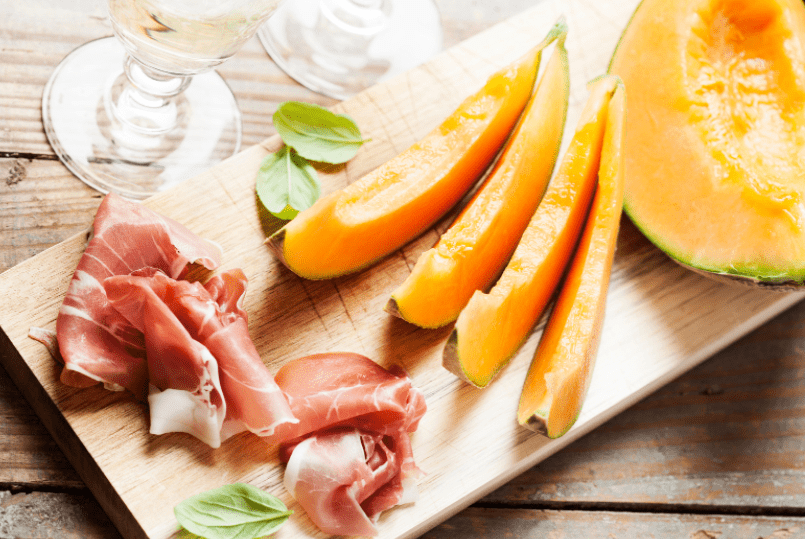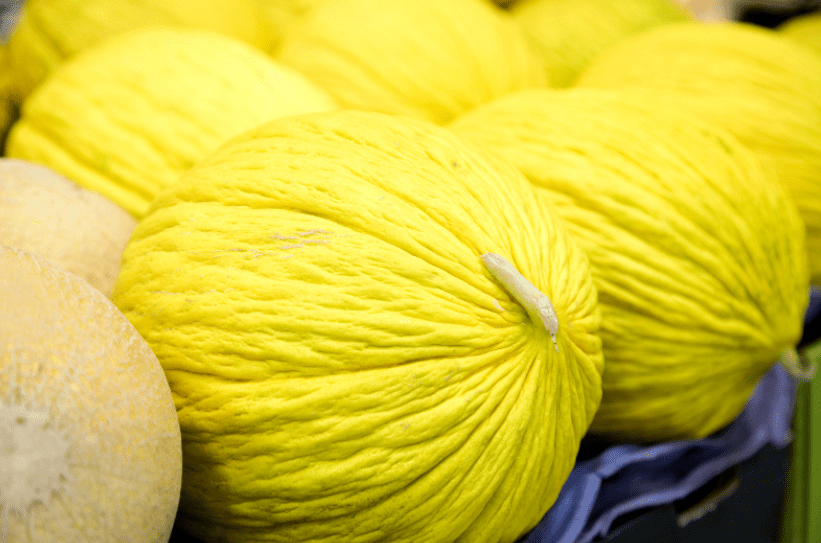Melon With Style
Casaba melons are also known as (Cucumis melo var inodorus), a delicious melon similar to honeydew and cantaloupe but have a less sweet flavor. It’s still sweet enough to eat, but there’s a spiciness to it.
Cultivating a casaba melon vine in the home garden requires some care and harvesting knowledge, but it is generally simple and similar to growing other melons.
What is a Casaba Melon
Casaba melons, like other melons, are a member of the Cucumis melo species. Casaba and honeydew both belong to the winter melon group, divided into varietal subdivisions of C. Melo.
Casaba melons are neither smooth nor netted like honeydew or cantaloupe. The skin is abrasive and ridged. Casaba comes in various colors, but the most common one grown and seen in supermarkets in the United States is ‘Golden Beauty.’
This variety is green when young, turns bright yellow when ripe, and has an acorn-shaped stem end. It has a thick, tough rind and white flesh, making it a good choice for winter storage.
Casaba Melons: How to Grow Them
Casaba melons care is similar to other melon varieties. It is a vine that thrives in hot weather. Casaba grows best in dry, hot climates because wet, warm conditions make the leaves susceptible to disease.
It may still be grown in humid regions and climates with cold winters, but cold temperatures and wet conditions must be avoided.
When the soil temperature rises to 65 degrees F (18 degrees C), you can sow seeds directly outdoors or start them indoors to get a head start on a shorter growing season.
Plants in beds should be thinned out or transplanted to be 18 inches (45 cm) apart. Ensure the soil is light and drains well before planting. Watering the casaba melon regularly is essential, as is avoiding wet conditions.
Black plastic mulch is beneficial because it helps to keep moisture in the soil while also protecting the plant from rot and disease. Harvesting Casaba is a little different than harvesting other melons.
They don’t detach from the vine when ripe, so they don’t slip. When they are close to maturity, cut the stem to harvest them.
The melons can then be stored until the blossom end softens, at which point they are ready to eat.
Casaba Melon With Muscat Wine and Prosciutto

Eight servings
The classic mix of melon and prosciutto is energized up with a taste of sweet dessert wine. This simple recipe makes for an excellent summer cocktail.
Hands-on: 20 minutes
Total time: 20 minutes
One casaba melon, halved, with seeds removed
1/4 cup muscat wine
1/4 pound thinly sliced prosciutto
Method
Cut each half of the cleaned and seeded melon into fourths. Place the slices on a serving platter and drizzle with wine. Drape each piece with the prosciutto.
Per serving: 92 calories (percent of calories from fat, 14), 6 grams protein, 14 grams carbohydrates,
1 gram fiber, 2 grams fat (1 gram saturated),
10 milligrams cholesterol,
407 milligrams sodium.
Chilled Casaba Soup

Two teaspoons salad oil
One fresh jalapeno pepper, seeded and sliced (wear gloves) or 1/4 teaspoon Tabasco sauce
1/2 cup fruity white wine
15 1/2- to 6-pound casaba melon, seeded; flesh peeled and cut into chunks
cup lime or lemon juice
2 to 4 tablespoons honey
Lime wheels and freshly ground black pepper for garnish
Method
Heat oil in a 1- to 2-quart skillet over medium-high heat. Add peppers and cook, stirring until soft (about 3 minutes).
Add wine and bring to a boil. (If using Tabasco sauce, bring to a boil with wine; omit the oil.)
Remove from heat and pour the mixture into the container of a food processor or blender.
Add about 1 cup of the melon and process, gradually adding remaining chunks until mixture is a smooth puree. Blend in lime or lemon juice and honey to taste.
Spoon into serving bowls; float lime wheels on top and sprinkle with freshly ground black pepper. Makes 5 to 6 cups.


























